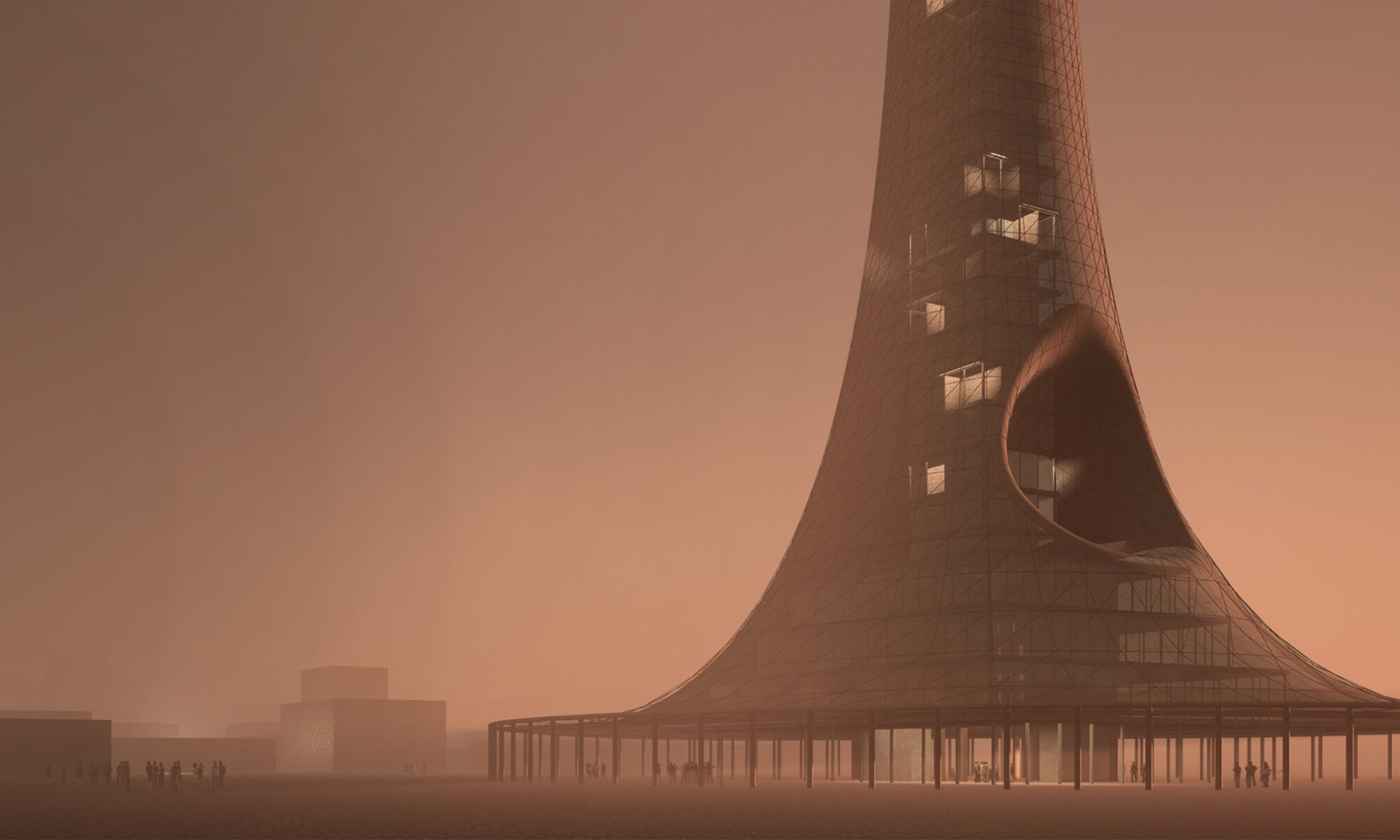Over the last centur y, the world has experienced an increase in urbanisation, resulting in significant growth of cities. E x tensive research has shown that the increase in sealed (built) sur faces leads to higher levels of pollution and ex treme temperatures, ef fectively turning some of our cities into giant boilers. In addition, the ef fects of global climate change make it inevitable that more and more cities will have to implement large-scale changes to ensure decent conditions for their inhabitants.
Burj aldawaran is inspired by the historic wind towers of the Middle East and uses the concept of thermal air movement not only to cool its own residents and visitors, but also to help ventilate the neighbourhood without using energy. The tower combines housing, commercial and social uses, providing 23 flats, four levels of commercial space, including a large road-marked area on the ground floor, and a public terrace containing cafés and restaurant on the fif th floor. The building consists of a core concrete/timber structure and a secondar y translucent tex tile façade that wraps around it to provide shade and create a space between the ex terior and interior. Burj aldawaranis can be built in the hear t of any medium to large cit y district that suf fers from ex treme temperature rises.

Multifunctional tower with apartments (pink), community space (green), commercial space (yellow), street market (dark brown)

100m high concrete core with wooden floor slabs and external steel cables. Second textile façade constructed on a triangular grid of steel cables connected to the main core at the top, to a circle of columns at the bottom and to each floor slab via central tension cables.

1 airflow between façades
2 air intake via floor slab
3 air outlet valve
4 ventilation shaft
5 smoke safety valve
6 glass façade
7 steel tension cable
8 timber beam 20×15
9 soil for soundproofing
10 steel cable triangle structure
11 steel tension cable

Using the physics of thermal air displacement, air rises between the textile facade and the core, creating a lowpressure area under the building, resulting in a centric airflow from the neighbourhood towards the building. (Creation of a miniature Hadley cell)

